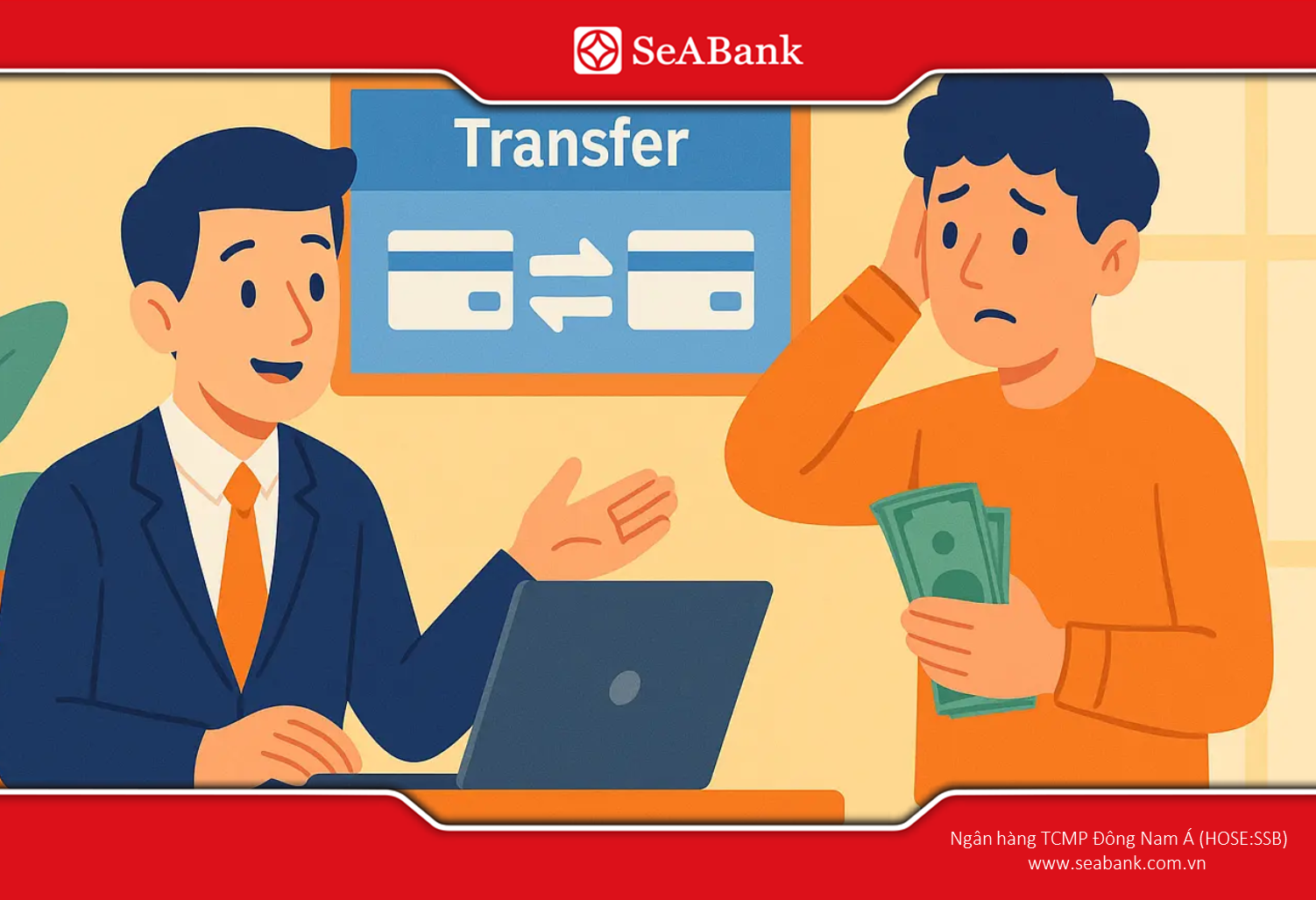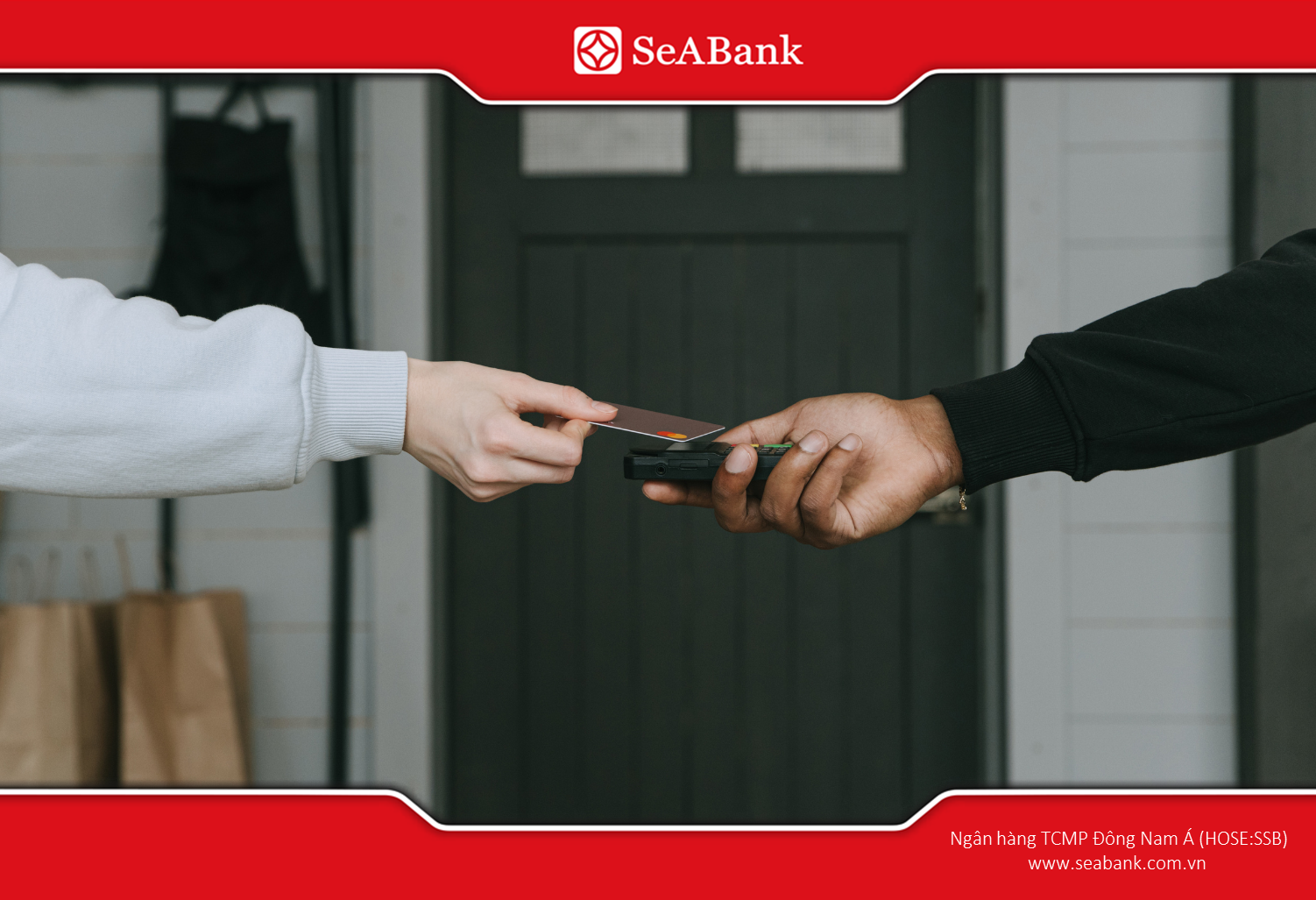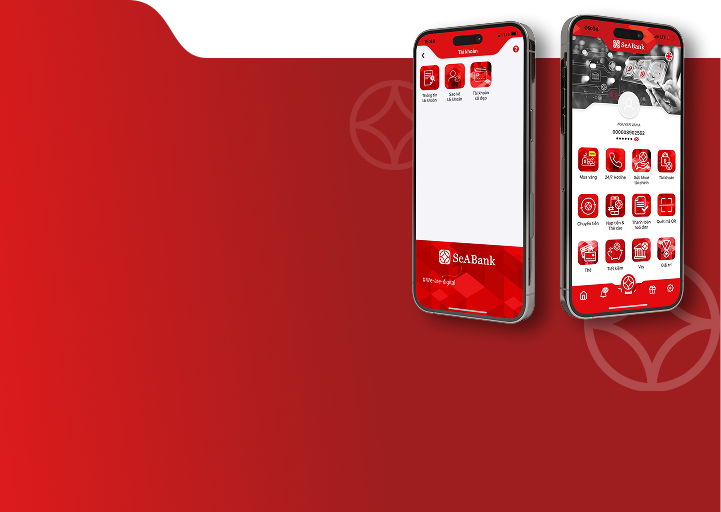News
How to get back transferred money when scammed: A complete and detailed guide
11/11/2025
Detailed instructions on how to get back money transferred when being scammed, from immediate handling steps to preventing future risks, helping to protect your rights to the maximum.
With the increase of online transactions, bank transfer fraud is becoming more and more sophisticated and difficult to control. Just one minute of being careless, users can lose all the transferred money without having time to react. In case of being scammed, the most important thing is to react as soon as possible - because time is the deciding factor in the ability to get the money back.
The article below provides detailed step-by-step instructions to help you handle it properly, while also equipping you with preventive solutions to avoid future risks.
Key takeaways:
- Immediately notify the bank and police for timely intervention.
- Collect full evidence: transactions, messages, emails, screenshots.
- Coordinate and monitor the process, and stay vigilant to prevent future risks.
1. Understand the situation: Can the money be recovered?
First, you need to realize that once the money has been transferred, it is almost impossible to automatically retrieve it, especially in cases where the scammer has immediately withdrawn the money or used someone else's account. The transfer is a confirmed transaction on the banking system, so the bank cannot automatically reverse the transaction without legal grounds or a request from the authorities.
However, there is still a chance to recover the money if you act quickly and coordinate properly with the bank as well as the police. Many cases show that timely notification can help to temporarily hold the recipient's account or identify the flow of money before the scammer withdraws it all.

Money is hard to get back but there is still a chance if you act quickly
Factors affecting the ability to recover money:
Time of incident discovery: The sooner you detect it, the better your chances of intervention and recovery. If you report it within a few hours of transferring the money, the bank can check and temporarily block the transaction or the recipient's account to prevent quick withdrawals.
Recipient account status: If the receiving account still has a balance or has not been withdrawn in full, the chances of recovering the money are higher. Conversely, if the money has been withdrawn immediately, the chances of recovery are very low, unless the police successfully trace the money flow.
Information about the scammer: Knowing the scammer's contact information, real name, phone number, email or social media accounts will help the authorities investigate faster. In many cases, scammers use fake accounts or borrow other people's accounts, so the more information, the more likely it is to verify and recover money.
Understanding the situation and quickly assessing these factors will help you take timely action, increasing your chances of recovering your money. Time is of the essence – every minute of delay can significantly reduce your chances of recovering your money.
2. Act immediately when you discover you have been scammed.
Once you realize you've been scammed, acting quickly and correctly is key to recovering your money.
Step 1: Stop all transactions and notify the bank
- Do not make any further transactions involving the scammer.
- Contact the bank immediately via hotline or nearest transaction office to report fraudulent transactions.
- Provide full information:
- Account number and recipient name.
- Amount and time of transfer.
- Transaction content, if any.
Note: The bank may temporarily hold or block transactions if detected promptly, especially with internal bank or same-system transactions.
Step 2: Collect detailed evidence
Evidence is the deciding factor in getting your money back:
- Transaction confirmation: Receipt, statement or transaction confirmation from the bank.
- Proof of communication: Text messages, emails, calls, or conversations with the scammer.
- Screenshots: Capture relevant information such as fake websites, money transfer requests, and winning notifications.
- Take detailed notes: Record the time, content of the conversation, and the steps you took.
Note: Store all evidence in a separate file, easy to send to banks and police agencies, to avoid losing important data.
Step 3: Report to the police
When you discover that you have been scammed, the most important step is to report to the police to protect your legal rights. You should go to the nearest police station to file a criminal complaint, detailing the incident.
When reporting, you need to provide the following complete information and evidence:
- Proof of transaction: statement, receipt, transfer confirmation or transaction screenshot.
- Information about the scammer (if known): name, phone number, email, social media accounts or any contact information.
After receiving the application, the police will proceed:
- Investigate and verify information: check the legitimacy of the transaction and identify the recipient of the money.
- Coordinate with banks and relevant agencies: trace the money flow and determine whether the transferred amount can be recovered.
Note: The investigation process can take time, from several weeks to several months, depending on the nature of the case. However, this is the most important step in protecting your legal rights and increasing your chances of recovering the money that was defrauded.
Step 4: Monitor and coordinate with the bank
After reporting the incident, you should always stay in regular contact with the bank to update the progress of the process and receive specific instructions. The bank can assist by contacting the recipient bank to temporarily block the account in question or provide the necessary transaction information to the police. Close and timely coordination with the bank will significantly increase the possibility of recovering the money that has been transferred by mistake or fraud.

Stop the transaction, notify the bank and report to the police immediately.
3. Identify common forms of money transfer fraud
Understanding the scams will help you avoid them more effectively and recognize them promptly when you encounter suspicious situations. Here are some common forms:
Impersonate an acquaintance or celebrity:
Scammers may pose as acquaintances, colleagues, or even celebrities on social media. They often create an urgent, emotional, or money-related story to pressure victims into transferring money immediately without checking carefully. For example, asking for urgent financial assistance due to an “accident” or “emergency”.
Fake message or link:
This scam is usually done via email, SMS, or social media messages. The scammer sends a request to log in to a fake website or provide an OTP code, password to take control of your bank account or credit card. In many cases, users think it is an official notification from the bank but it is actually a fake page.
Promotions and fake prizes:
Scammers advertise attractive sweepstakes, giveaways, or promotions, luring victims into providing personal information or transferring a fee in exchange for a prize. In reality, the prize or giveaway doesn't exist, and your money or personal information ends up in the hands of the scammers.

Scammers trick people into transferring money or providing information using fake prizes
Counterfeit services or products:
Some scammers create websites, social media pages or advertise non-existent services or products to trick users into transferring money before receiving the goods or services. Once the money has been transferred, you will not receive any products or services, and there is little chance of getting your money back if you do not report it promptly.
Asking for urgent money transfer from stranger:
Fraudsters often send messages asking for money transfers under urgent or urgent circumstances to create pressure, making it difficult for victims to check the sender's information. For example: borrowing money to pay bills, provide emergency aid, or "help with an urgent matter". This is a common form because psychological pressure causes many people to transfer money without thinking.

The scammer asked for an urgent money transfer to force the victim to transfer it quickly.
4. Measures to prevent transfer fraud
To avoid losing money, it is important to prevent fraud before making a transaction. Here are some measures you should take:
Double check the recipient information:
Before transferring money, confirm the recipient's account number, account holder name, and bank. This will help avoid sending money to the wrong person or to a scammer pretending to be someone you know. Even a single letter wrong in the name or account number can cause money to go to the wrong place.
Do not share OTP codes, passwords or personal information:
OTP code, password, bank authentication code are the keys to access your account. Do not give it to anyone, including those claiming to be banks, police or authorities. Scammers often use intimidation or pressure to trick you into providing this information.

Do not share OTP, password or personal information
Verify website and link before logging in:
When you receive an email, text message, or link from a social media site, double-check its legitimacy. A fake website may look exactly like your bank's official site, but is actually there to get your login information. Go directly to the bank's official site instead of clicking on a strange link.
Beware of scams, promotions or urgent money transfers:
If you receive a request from a stranger to transfer money or a notification that you have won a prize, be suspicious and check the information carefully. These tricks often create psychological pressure to make the victim act hastily without thinking.
Educate yourself and your loved ones about the latest scams:
Online scams are constantly changing their methods. Stay informed and warn your loved ones, especially the elderly and children, about new tricks to reduce the risk of losing money.

Contact SeABank now for timely support and instructions on money recovery.
Frequently Asked Questions (FAQs)
1. How to report a fraudulent bank account?
As soon as you detect signs of fraud, you need to immediately contact the call center or the bank branch where the transaction was made to request a temporary freeze of the beneficiary account (if possible). At the same time, prepare evidence of the transaction and submit a report to the police for coordination in handling.
For example: You transfer money from SeABank to bank X. When detecting signs of fraud, you need to immediately contact SeABank's call center for support and guidance.
2. Who should I report to if I discover I have been scammed?
You should notify both parties at the same time:
- Bank: to perform tracing, freezing, or refunding (if possible).
- Police agency (Cyber Security Department or Local Police): to open an investigation file, support the verification of the recipient.
3. I was scammed into transferring money, can I get it back?
The possibility of recovering the money depends on the time of reporting and the status of the recipient's account. If the money has not been withdrawn, the bank can support the freezing; conversely, if the money has been transferred, the police need to get involved to investigate and recover. Reporting early within the first few hours is the deciding factor.
4. Can a money transfer to the wrong person be recovered?
Yes, if you notify the bank immediately so they can contact the recipient. In many cases, the bank will assist in sending a refund letter. If the recipient does not return the money voluntarily, you have the right to request legal assistance or file a civil lawsuit.
5. Can I report to the police online or do I have to go in person?
Currently, people can report online via the Ministry of Public Security's Electronic Information Portal or the VNeID application. However, for cases involving large sums of money or complexities, you should still go directly to the police station to work and submit original documents.
6. Does the bank automatically refund money if scammed?
No. The bank does not have the right to automatically refund without confirmation from the investigating agency or consent from the beneficiary account holder. The bank's role is to coordinate the blocking, preserve evidence and support the investigation when legally requested.
7. How long does it take to get my money back after reporting to the bank?
The processing time depends on the complexity of the case, usually ranging from a few days to a few weeks, even longer if an investigation is required. Providing clear, complete and timely evidence will help shorten this process.
Knowing how to get your money back when you have been scammed is an extremely important skill in the digital transaction era. Although no bank or agency can guarantee 100% successful recovery of money, reporting immediately and preparing enoughequalClose coordination and collaboration will significantly increase the likelihood of support.
If you need detailed instructions or practical support, please contact SeABank via Hotline or official website for advice.
Related News
Detailed answers: Can bad debt get a mortgage loan and how to handle it? 11/11/2025
Saving money in the bank: Benefits, methods, interest rates and 5+ tips for attractive profits 11/11/2025
What is the annual fee? Fee schedule, way to look it up and 3+ tips to reduce 11/11/2025
Compound interest - formula, examples, applications and important notes 11/11/2025
What is a bank overdraft? Instructions on forms, conditions and interest rates 2025 11/11/2025

Detailed answers: Can bad debt get a mortgage loan and how to handle it?
Find out if bad debt can get a mortgage, with conditions, procedures and ways to increase the chance of being approved by the bank.
11/11/2025
Read more

Saving money in the bank: Benefits, methods, interest rates and 5+ tips for attractive profits
Safe savings deposit, attractive interest rates at SeABank–Smart choices help you generate profits effectively and manage finances sustainably.
11/11/2025
Read more

What is the annual fee? Fee schedule, way to look it up and 3+ tips to reduce
Find out what annual fees are, the types of fees that apply, and how to reduce costs when using a bank card to optimize financial benefits.
11/11/2025
Read more







